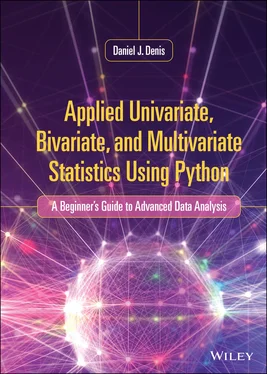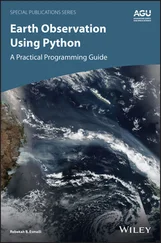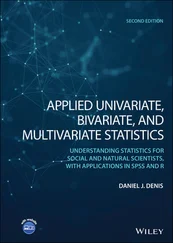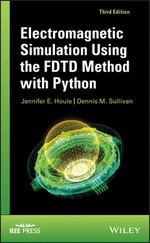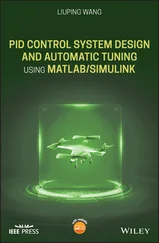12 Chapter 7: Simple and Multiple Linear Regression 7.1 Why Use Regression?7.2 The Least-Squares Principle7.3 Regression as a “New” Least-Squares Line7.4 The Population Least-Squares Regression Line7.5 How to Estimate Parameters in Regression7.6 How to Assess Goodness of Fit?7.7 R2 – Coefficient of Determination7.8 Adjusted R27.9 Regression in Python7.10 Multiple Linear Regression7.11 Defining the Multiple Regression Model7.12 Model Specification Error7.13 Multiple Regression in Python7.14 Model-Building Strategies: Forward, Backward, Stepwise7.15 Computer-Intensive “Algorithmic” Approaches7.16 Which Approach Should You Adopt?7.17 Concluding Remarks and Further Directions: Polynomial RegressionReview Exercises
13 Chapter 8: Logistic Regression and the Generalized Linear Model 8.1 How Are Variables Best Measured? Are There Ideal Scales on Which a Construct Should Be Targeted?8.2 The Generalized Linear Model8.3 Logistic Regression for Binary Responses: A Special Subclass of the Generalized Linear Model8.4 Logistic Regression in Python8.5 Multiple Logistic Regression8.5.1 A Model with Only Lag18.6 Further DirectionsReview Exercises
14 Chapter 9: Multivariate Analysis of Variance (MANOVA) and Discriminant Analysis 9.1 Why Technically Most Univariate Models are Actually Multivariate9.2 Should I Be Running a Multivariate Model?9.3 The Discriminant Function9.4 Multivariate Tests of Significance: Why They Are Different from the F-Ratio9.4.1 Wilks’ Lambda9.4.2 Pillai’s Trace9.4.3 Roy’s Largest Root9.4.4 Lawley-Hotelling’s Trace9.5 Which Multivariate Test to Use?9.6 Performing MANOVA in Python9.7 Effect Size for MANOVA9.8 Linear Discriminant Function Analysis9.9 How Many Discriminant Functions Does One Require?9.10 Discriminant Analysis in Python: Binary Response9.11 Another Example of Discriminant Analysis: Polytomous Classification9.12 Bird’s Eye View of MANOVA, ANOVA, Discriminant Analysis, and Regression: A Partial Conceptual Unification9.13 Models “Subsumed” Under the Canonical Correlation FrameworkReview Exercises
15 Chapter 10: Principal Components Analysis 10.1 What Is Principal Components Analysis?10.2 Principal Components as Eigen Decomposition10.3 PCA on Correlation Matrix10.4 Why Icebergs Are Not Good Analogies for PCA10.5 PCA in Python10.6 Loadings in PCA: Making Substantive Sense Out of an Abstract Mathematical Entity10.7 Naming Components Using Loadings: A Few Issues10.8 Principal Components Analysis on USA Arrests Data10.9 Plotting the ComponentsReview Exercises
16 Chapter 11: Exploratory Factor Analysis 11.1 The Common Factor Analysis Model11.2 Factor Analysis as a Reproduction of the Covariance Matrix11.3 Observed vs. Latent Variables: Philosophical Considerations11.4 So, Why is Factor Analysis Controversial? The Philosophical Pitfalls of Factor Analysis11.5 Exploratory Factor Analysis in Python11.6 Exploratory Factor Analysis on USA Arrests DataReview Exercises
17 Chapter 12: Cluster Analysis 12.1 Cluster Analysis vs. ANOVA vs. Discriminant Analysis12.2 How Cluster Analysis Defines “Proximity”12.2.1 Euclidean Distance12.3 K-Means Clustering Algorithm12.4 To Standardize or Not?12.5 Cluster Analysis in Python12.6 Hierarchical Clustering12.7 Hierarchical Clustering in PythonReview Exercises
18 References
19 Index
20 End User License Agreement
1 Chapter 3Table 3.1 Percentage increases in COVID-19 in 14 days as of June 22, 2020.
2 Chapter 4Table 4.1 Matched design.Table 4.2 Randomized block design.Table 4.3 Learning as a function of trial (hypothetical data).Table 4.4 Contingency table for a 2 × 2 design.
3 Chapter 6Table 6.1 Achievement as a function of teacher.Table 6.2 Achievement as a function of teacher and textbook.Table 6.3 Achievement as a function of teacher and textbook.Table 6.4 Matched pairs design.Table 6.5 Learning as a function of trial (hypothetical data).
1 Chapter 1Figure 1.1 Sample death predictions in the United States during the COVID-19...
2 Chapter 3Figure 3.1 A Comparison of Nuclear Power in 1945 and 2020. Reproduced with...Figure 3.2 Total reported COVID-19 cases. Source: CDC (Centers for Disea...Figure 3.3 Map of COVID-19 Outbreak in the State of California as of O...Figure 3.4 Bubble plot of COVID-19 cases across the United States early...Figure 3.5 The price of oil from 2019 to 2020. The price turned negative...
3 Chapter 8Figure 8.1 Challenger shuttle disaster of 1986. Challenger in flight with...
4 Chapter 10Figure 10.1 Pumpkin with an eigenvector visible before the transformation...
5 Chapter 12Figure 12.1 COVID-19 Map of Montana Counties during the Pandemic of 2020.
1 Cover
2 Title page Applied Univariate, Bivariate, and Multivariate Statistics Using Python A Beginner’s Guide to Advanced Data Analysis Daniel J. Denis
3 Copyright
4 Dedication
5 Table of Contents
6 Preface
7 Begin Reading
8 References
9 Index
10 End User License Agreement
1 i
2 ii
3 iii
4 iv
5 v
6 vi
7 vii
8 viii
9 ix
10 x
11 xi
12 xii
13 xiii
14 xiv
15 xv
16 xvi
17 xvii
18 xviii
19 xix
20 xx
21 1
22 2
23 3
24 4
25 5
26 6
27 7
28 8
29 9
30 10
31 11
32 12
33 13
34 14
35 15
36 16
37 17
38 18
39 19
40 20
41 21
42 22
43 23
44 24
45 25
46 26
47 27
48 28
49 29
50 30
51 31
52 32
53 33
54 34
55 35
56 36
57 37
58 38
59 39
60 40
61 41
62 42
63 43
64 44
65 45
66 46
67 47
68 48
69 49
70 50
71 51
72 52
73 53
74 54
75 55
76 56
77 57
78 58
79 59
80 60
81 61
82 62
83 63
84 64
85 65
86 66
87 67
88 68
89 69
90 70
91 71
92 72
93 73
94 74
95 75
96 76
97 77
98 78
99 79
100 80
101 81
102 82
103 83
104 84
105 85
106 86
107 87
108 88
109 89
110 90
111 91
112 92
113 93
114 94
115 95
116 96
117 97
118 98
119 99
120 100
121 101
122 102
123 103
124 104
125 105
126 106
127 107
128 108
129 109
130 110
131 111
132 112
133 113
134 114
135 115
136 116
137 117
138 118
139 119
140 120
141 121
142 122
143 123
144 124
145 125
146 126
147 127
148 128
149 129
150 130
151 131
152 132
153 133
154 134
155 135
156 136
157 137
158 138
159 139
160 140
161 141
162 142
163 143
164 144
165 145
166 146
167 147
168 148
169 149
170 150
171 151
172 152
173 153
174 154
175 155
176 156
177 157
178 158
179 159
180 160
181 161
182 162
183 163
184 164
185 165
186 166
187 167
188 168
189 169
190 170
191 171
192 172
193 173
194 174
195 175
196 176
197 177
198 178
199 179
200 180
201 181
202 182
Читать дальше
